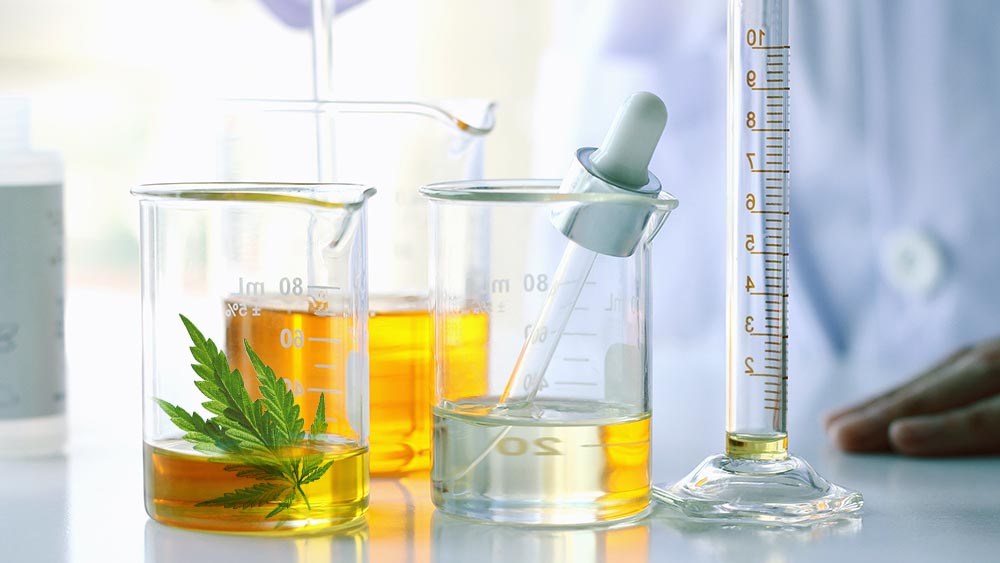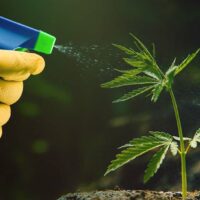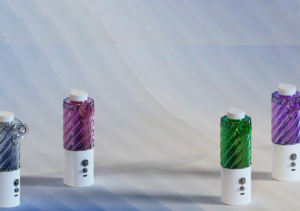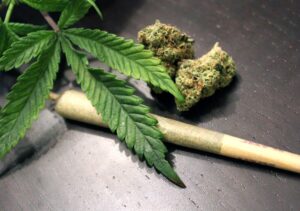Whichever way you’re looking at CBD – as a scientist, buyer or wannabe cultivator – you’ll want to know more about its extraction process.
CBD extraction is one of the critical manufacturing stages that will decide the quality of the end product.
The first condition for a high-grade CBD is, obviously, a healthy and clean plant. But even the purest bud can be ruined or contaminated with poor extraction.
That’s why it is crucial to learn more about the techniques which are used behind the label.
The trouble is that most online sources hail to a single extraction method while biasedly criticizing the others. And the truth is, as always, somewhere in the middle.
To get to the bottom of it, we spoke to Andy Joseph, the founder of Apeks Supercritical, engineer, inventor of five patents, and a skilled fabricator.
Turns out, he is not so biased on the matter.
First Things First: What Is CBD Extraction?
As you probably know, the cannabis plant is rich in various compounds, with THC and CBD being the most famous among them.
To make a product with a single active cannabinoid, a raw plant has to be submitted to a chemical procedure that separates the material into individual compounds. For the extraction process, it is used CBD extraction machines.
Simply put, if you want a bottle of CBD oil, you’ll have to draw it out of cannabis physically.
There are various ways to do this, and each has its pros and cons.
Mechanical and Solvent Extraction
In a nutshell, there are two ways to extract CBD from a cannabis plant: mechanical and solvent-based. Each of these then has subgroups with variations in effects, cost, and time management.
There are a couple of procedures that are referred to as mechanical separation techniques – dry sieve (Kief production process), ice water hash, bubble bags.
Essentially, they all come down to the same procedure: getting the raw material cold and mechanically breaking off the fragile trichomes, where the majority of cannabinoids live.
The major con of the method is that it can’t be used on trims. That’s where the solvent extraction comes in.
While extracting solvents are many, a few of them have been dominating the cannabis industry in recent years: CO2, butane and propane (hydrocarbons), alcohol/ethanol/isopropyl.
Whatever the solvent, the outline of solvent extraction is pretty much the same: a raw cannabis plant is mixed with a liquid that will strip away the cannabinoids, which will subsequently be removed from the concentrate.
Struggling to dose CBD? We made an app that calculates your perfect dosage based on research studies. Download our Droppy CBD Oil Dosage Calculator app.
CO2 Extraction – The Industrial Golden Standard
The extraction method that became a state of the art of the cannabis industry is using highly pressurized CO2 to separate cannabinoids from the plant.
The technique is safe and effective, but because it uses sophisticated instruments, it’s reserved for industrial-scale production.
At standard temperatures and pressure, CO2 exists in a gas phase. When heated above 31.0℃ (critical temperature) and 1,070 PSI (critical pressure), CO2 exhibits both the properties of a gas and a liquid, becoming what is called a “supercritical fluid”, which acts as a solvent and is a necessary beginning step of supercritical CO2 extraction.
The supercritical fluid then passes through a chamber containing raw cannabis material, gently dissolving the membrane of the trichomes to capture their active compounds.
Next, the compound-enriched solvent passes into another pressurized separation vessel. As pressures and temperatures fluctuate, compounds such as cannabinoids and terpenes are fractionated away.
Finally, the remaining CO2 is transferred to a condenser vessel where the temperature and pressure allow the fluid to stabilize back into a gas and leave the extract.
Advantages of CO2 Extraction
The biggest advantage of CO2 extraction from a manufacturer’s standing point is that it is a tunable solvent, said Andy Joseph.
“What that means is that simple changes of the operating parameters during extraction [typically temperature and pressure] can either make it weaker or stronger. And that subsequently allows you to take out different target elements that have different molecular weights,” he explained.
In essence, such CBD extraction is highly scalable, and you can maneuver it in accordance with what you’re trying to make.
From a customer’s perspective, the advantage of CO2 is that it wants to be a gas at room temperature, Joseph continued.
“You’re left with a pure extract. There’s no residual solvent,” he emphasized.
“Think like a beer or soda. When you leave them to sit out, all of the carbon dioxide that makes them bubbly and fizzy is gone after a couple of hours. The same thing happens when you use carbon dioxide as an extraction solvent. Once the material has been extracted, the CO2 is outcast just by letting the material off-gas,” he explained.
The best thing, you are left with a pure representation of the oil that was in the original material plant.
Pros and Cons
The biggest downside of CO2 extraction is the cost of the equipment because it takes a substantial amount of pressure to convert it from a gas into a liquid.
The equipment tends to be very expensive or relatively expensive compared to other competitive extractions.
“It’s not that CO2 is generally better than the rest of them. It’s all about the pros and cons. Depending on what you’re trying to make and who your target audience is, different techniques will hold various values,” Joseph noted.
For example, a pure extraction with no residual solvent is attractive to a particular market.
“More generally, there’s a huge difference between manufacturing the CBD product that will have a boutique type of application, or be condemned for a mass production environment,” he added.
Residual Solvents in CBD: Extraction Methods Comparison
While CO2 is exhausting its reputation from the purity argument, ethanol and hydrocarbons are notorious for potentially leaving the harmful residues in the end product.
However, Andy Joseph explicitly argued that it should be clarified we’re talking about a potential only.
“Ethanol can have different purities. There’s pharmaceutical-grade ethanol, 200 proof, and then there’s vodka. They’re both technically alcohol, but the difference between them is obviously in purity. As for hydrocarbons, they did start out in the ground at some point in time, which obviously means they can contain heavy metals and contaminants,” Joseph clarified.
That’s Where the Challenges of Using Them as Solvents Come In
“If you perform an extraction with a grade that’s not pure enough, you can absolutely have contaminants leftover in the extraction. But it really is all about potential. And it really depends on how well the process is done and how much filtration happens,” he added.
On the other hand, CO2 extraction is perceived as safe and harmless. It almost became a mark that instantly signalizes quality and cleanness.
“It’s just CO2 – the same thing that our bodies are made of,” Joseph briefly presented the argument.
But even this solvent will require secondary filtering.
“Secondary and tertiary filtering happens across board – whether we are discussing CO2, hydrocarbons, or ethanol. A lot of times, there are unwanted elements that are not necessarily contaminants, but that will need to be outcast from the CBD concentrate – chlorophyll is a good example,” Joseph explained.
“Lipids, oils, fats, are others that fall in the same category,” he added, “if they’re not separated from the CBD extraction, then they will settle in the final product. Imagine running into this on the shelf of a dispensary or a store. Some people will certainly find the layer unattractive, and would be put off the purchase.”
“As far as the contaminants are concerned, sometimes it can be a real challenge to get them below a state’s allowable limit. Secondary processing plays a major role here, and that usually means a lot of extra work,” Joseph explained.
Safety Precautions
The other issue to address is definitely the safety precautions regarding different solvents.
In the case of hydrocarbons, this is a major concern. Extracting CBD this way means operating the explosive gas.
“The safety precautions that are necessary to operate a hydrocarbon extraction system are significant,” Joseph noted, “the process is done in a special facility called Class I, Division 1 explosion proof facilities.”
“However, hydrocarbon CBD extraction can absolutely be done safely. It’s just that there is a significant cost associated with this,” Joseph emphasized.
So, it is not the case that hydrocarbon CBD extraction is always going to be unsafe, but making sure the process is performed in a safe manner can be pretty expensive.
Bottom Line: It All Depends On the End Product You’re Trying to Make
“The reality is that almost every extraction method can produce almost every CBD product type, but some are much better at it than others. It all comes down to situation-specific efficiency. That’s where the complementary aspect comes in,” Joseph said.
CBD extraction methods are complementary, not necessarily in a sense that they are running in series (one after another), but in parallel (creating the products they are best suited for).
He gave us some useful examples: hydrocarbons are particularly good at making the recreational dabbing products – shatter, crumble, live resin; CO2 excels at terpene extraction, and in the crude extract production; whereas ethanol shines in volume – although the weakest of the three, it can handle large quantities the most effectively.
“The biggest drawback with ethanol is that it’s kind of a “one-trick pony”. It’s really only good at making a whole lot of one product – a distillate or an isolate. A nice illustration is a comparison to sugar or flour. It gets utilized as an ingredient, particularly in edibles.”
“To sum it up, CBD extraction methods really are complementary, as there’s a continuous demand for all of these types of CBD products,” Andy Joseph concluded.





